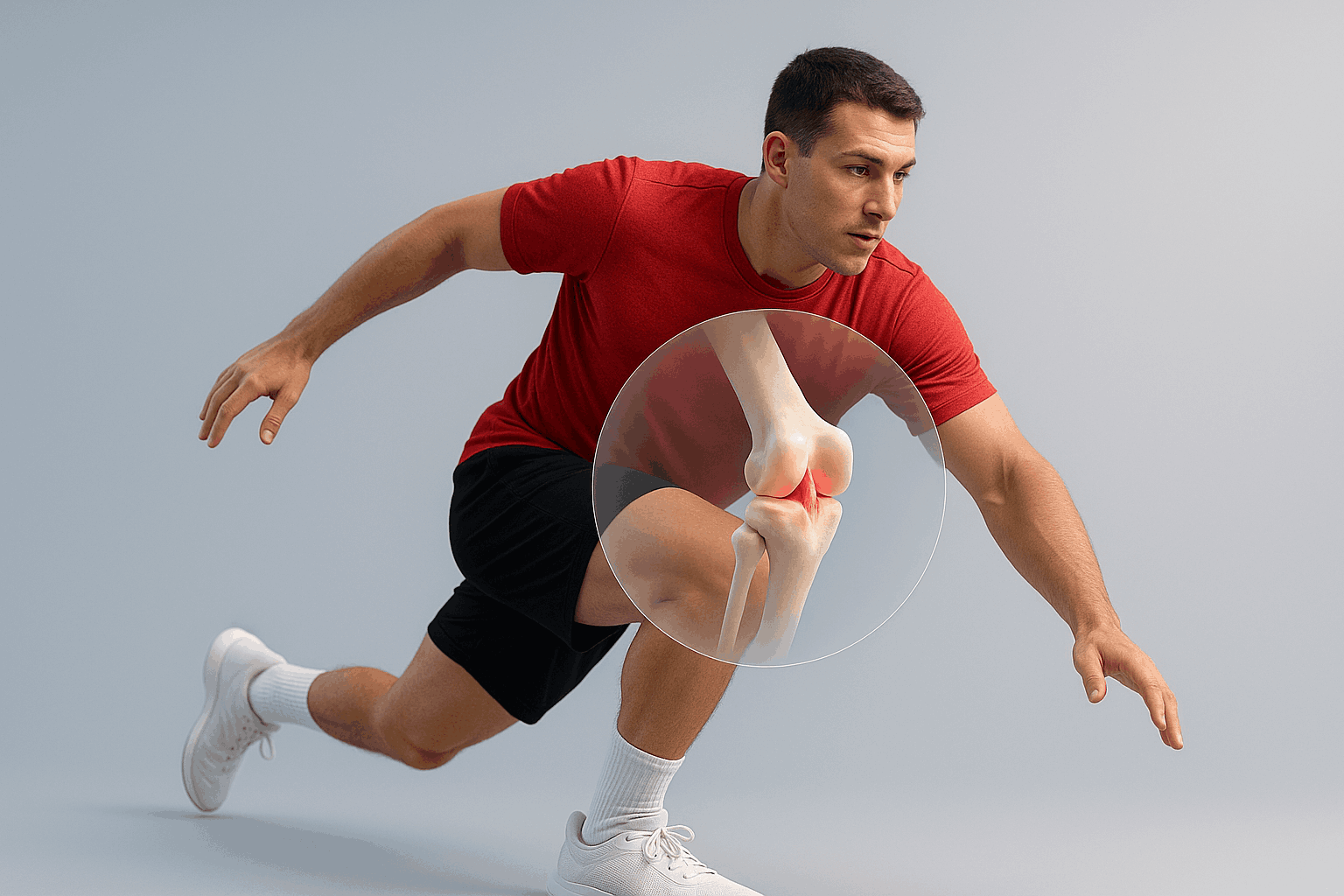Knee ligament injuries are among the most frequent injuries in sports and daily activities. They range from minor strains to complete tears that may require surgery and months of rehabilitation. Knowing how these injuries happen, what symptoms to look for, and the best treatment options can make a big difference in recovery and prevention.
Understanding the Anatomy of the Knee
The knee is one of the largest and most complex joints in the body. It connects the thigh bone (femur) to the shin bone (tibia) and is supported by four main ligaments:
- Anterior Cruciate Ligament (ACL): Prevents the tibia from sliding forward.
- Posterior Cruciate Ligament (PCL): Prevents the tibia from sliding backward.
- Medial Collateral Ligament (MCL): Provides stability on the inner side of the knee.
- Lateral Collateral Ligament (LCL): Provides stability on the outer side of the knee.
Together, these ligaments keep the knee stable during movement and absorb stress from activity.
Different Types of Knee Ligament Injuries
ACL Injury
The ACL is the most commonly injured ligament. It’s often torn during sports that involve sudden stops, pivots, or awkward landings.
PCL Injury
The PCL is injured less frequently. It usually happens in car accidents or contact sports when the shin is forced backward.
MCL Injury
The MCL is commonly injured by a direct blow to the outside of the knee, pushing it inward. This is frequent in football, rugby, and skiing.
LCL Injury
The LCL is the least commonly injured ligament. Damage occurs when the inside of the knee is hit, forcing the joint outward.
Causes of Knee Ligament Tears
Knee ligament injuries are often caused by sudden, forceful movements that strain the knee beyond its normal range of motion. Some common causes include:
- Sudden changes in direction: Quick pivots, shifts, or sudden stops in sports can lead to a ligament tear, particularly in high-intensity activities like soccer, basketball, and skiing.
- Improper landings: Landing incorrectly after a jump can put excess stress on the ligaments, causing them to stretch or tear.
- Direct impacts: Contact sports such as football and rugby often involve direct blows to the knee, which can damage ligaments.
- Twisting or overstretching: Actions that cause the knee to twist awkwardly or stretch too far can result in tears, especially in the anterior cruciate ligament (ACL).
Symptoms of Knee Ligament Tears
The severity of symptoms can vary depending on the ligament affected and the extent of the injury. Some common symptoms include:
- Pain: This can range from mild to severe, often occurring immediately after the injury. Pain tends to be sharp and intense, especially with movement.
- Swelling: Swelling usually occurs within hours of the injury, and the knee may become noticeably larger and more tender.
- Instability: You may experience a feeling of the knee “giving way” or a loss of stability, making it difficult to walk or stand.
- Reduced range of motion: The knee may feel stiff, and bending or straightening it could be painful or difficult.
Essential Recovery Steps and Treatments
Treatment for knee ligament tears varies depending on the severity of the injury. Here’s an overview of the recovery steps and treatments available at Burjeel Royal Hospital Asharej:
- Initial Treatment (RICE Protocol):
For mild injuries or sprains, the first step in treatment is the RICE method:
- Rest: Avoid putting weight on the knee to prevent further damage.
- Ice: Apply ice packs to reduce swelling and manage pain.
- Compression: Use an elastic bandage or brace to support the knee and limit swelling.
- Elevation: Keep the knee elevated to help reduce swelling.
- Physical Therapy:
For moderate injuries, physical therapy is essential to regain strength and mobility. A physical therapist will guide you through exercises that focus on strengthening the muscles around the knee, such as the hamstrings and quadriceps, to help stabilize the joint.
- Bracing and Activity Modification:
In cases of moderate to severe tears, a knee brace may be used to provide support during movement. Activity modifications are also recommended to prevent further strain on the ligament while it heals.
- Surgical Intervention:
For severe tears, particularly of the ACL, surgical intervention may be required. This is often followed by a lengthy rehabilitation period to restore the knee’s functionality. At Burjeel Royal Hospital Asharej, our orthopedic surgeons specialize in minimally invasive knee surgeries, such as ACL reconstruction, to ensure a quicker recovery with less risk of complications.
- Rehabilitation:
Following surgery, rehabilitation is critical. A structured physical therapy program will help restore strength, flexibility, and stability to the knee. This phase of recovery may take several months, with most patients returning to normal activities within 6 to 12 months, depending on the severity of the tear.
Treatments Offered at Burjeel Royal Hospital Asharej
At Burjeel Royal Hospital Asharej, we offer advanced, personalized treatments for knee ligament injuries:
- Consultation with Expert Orthopedic Surgeons: Our team of orthopedic surgeons specializes in knee injuries and provides tailored treatment plans based on your unique condition.
- Advanced Imaging and Diagnostics: We utilize state-of-the-art imaging techniques, such as MRI and X-rays, to accurately diagnose the extent of the injury and create an effective treatment strategy.
- Minimally Invasive Surgery: We perform minimally invasive surgeries that reduce recovery time and minimize scarring, allowing for a faster return to activity.
- Comprehensive Rehabilitation Programs: Our physical therapists offer customized rehabilitation programs to ensure full recovery, improve range of motion, and strengthen the muscles around the knee.
Prevention Strategies
While not every injury can be avoided, you can lower your risk by:
- Strengthening muscles around the knee (especially hamstrings and quadriceps)
- Improving flexibility and balance
- Using proper sports techniques
- Wearing appropriate shoes and protective gear
- Avoiding sudden, uncontrolled movements
Frequently Asked Questions
It depends on the ligament and severity. Mild sprains may heal in weeks, while ACL reconstruction can take 6–12 months.
Yes, in mild cases. But with severe tears, walking may be very difficult without support.
Chronic instability, worsening pain, and long-term joint damage such as early arthritis.
Conclusion
Knee ligament tears can significantly impact your mobility, but with prompt treatment and proper rehabilitation, most people can fully recover and return to their normal activities. If you suspect you have a knee ligament injury, don’t wait. Contact Burjeel Royal Hospital Asharej to schedule a consultation with our specialized orthopedic doctors and begin your path to recovery today.







